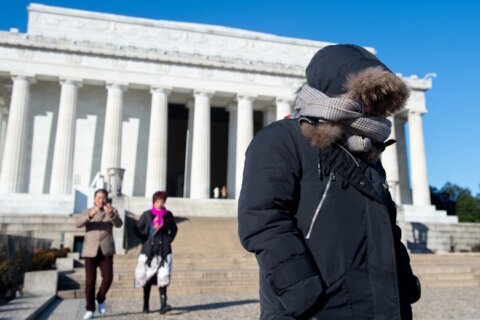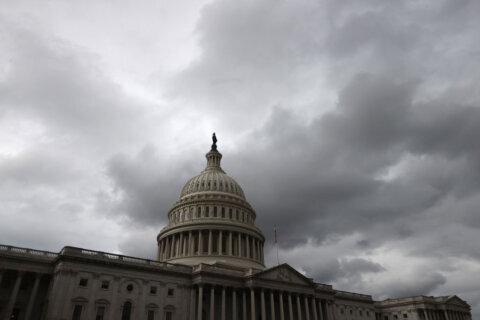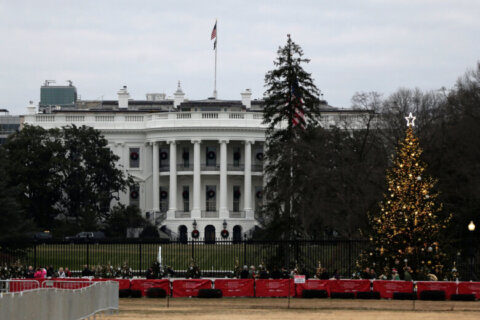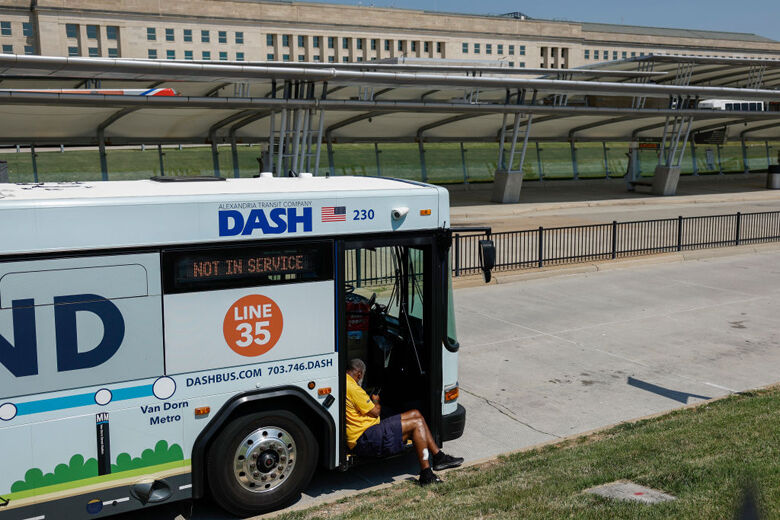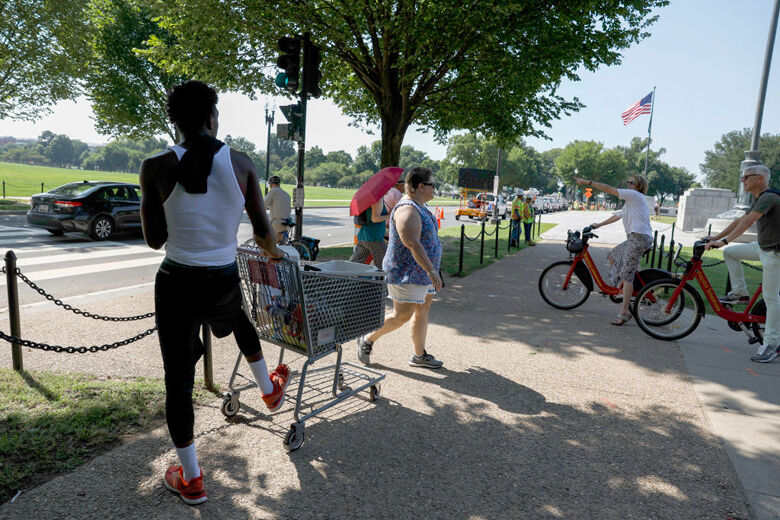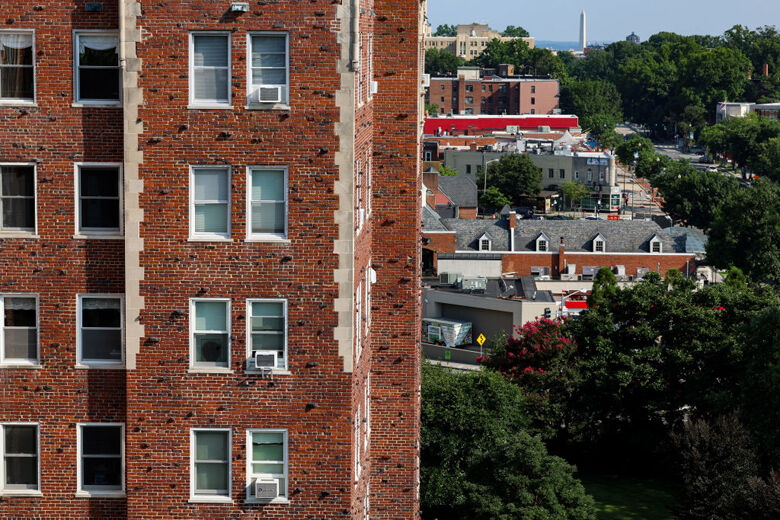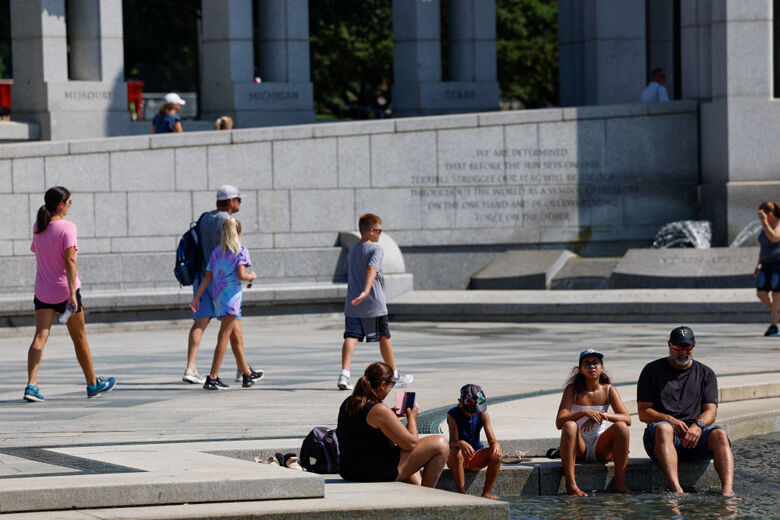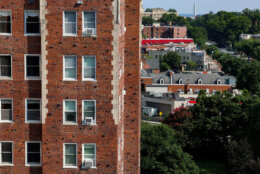Some in the D.C. region will hear rumbles of thunder Thursday afternoon, but the main story for most will be the dangerous heat and humidity that’ll linger over the region into next week.
Much of the Mid-Atlantic baked in the low to mid 90s again on Thursday afternoon: Reagan Airport recorded a high of 95, five degrees above the average high for July 21. Factoring in the humidity, heat indexes soared near or over the 100-degree mark, especially along coastal Virginia.
Unfortunately, the forecast doesn’t offer much of a break in the near term: D.C. and Baltimore are locked in for high temperatures in the mid to upper 90s and heat indexes as high as 110 all the way through Sunday.
“As the old saying goes, it’s not just the heat — it’s the humidity, and that combination will be bringing us some of the hottest conditions we’ve experienced since August of 2016,” Storm Team4 meteorologist Chuck Bell said. “Sunday will likely be the peak of this heat wave with afternoon highs near 100, but with higher humidity levels bringing heat indexes to between 105 and 110.”
As always: Drink plenty of water, take breaks and stay out of the sun as much as possible. Limit strenuous outdoor activities to the early morning hours if you can.
- How to avoid heat stroke, heat exhaustion
- See an interactive map of D.C.’s cooling centers
- Listen to WTOP online and on the radio at 103.5 FM or 107.7 FM.
- Current traffic conditions
- Weather forecast
- Sign up for WTOP alerts
An unstable air mass means the potential for severe weather, although Thursday’s storm coverage will be limited outside central and southern Virginia, where a Severe Thunderstorm Watch is in effect until tonight.
Closer to home, expect an outside chance of a pop-up thunderstorm — keeping in mind that any storms that do form could quickly ramp up in strength and bring damaging wind gusts or small hail.
“A ‘cold’ front will pass through the area this afternoon and act as a trigger for some isolated storms — in reality, it’s just a humidity front,” Bell said. “The intense heat ahead of this front will give any storms that develop a chance to become severe, but the coverage area of these storms will be limited mainly to areas south and east of the District.”
As of 7 p.m. Thursday, strong storms were working their way across the southern half of the Delmarva; thundershowers had cleared the D.C. and Baltimore areas to the south and east. Drivers on Interstate 95 might encounter storms if commuting south of Fredericksburg.
Trees and wires blew down into a home earlier this afternoon near Huntingtown, Maryland, where a lightning strike also sparked a barn fire on Old Evans Road. Emergency operators received several calls for tree damage between Centreville and Reston in Virginia.
There’s no way to sugarcoat the next few days. It will be an ugly and dangerous stretch of hot weather peaking on Sunday. There will be a slight drop in humidity for Fri & Sat but Sunday the steaminess will return. Heat index on Sunday will hover near 110°! @nbcwashington pic.twitter.com/6ZNxmCrCGi
— Chuck Bell (@ChuckBell4) July 21, 2022
The District continues to implement its heat emergency plan, opening indoor cooling centers to help residents beat the heat. Find more info on heat safety, including a map of cooling shelters, on the city’s website.
The next chance for cooler daytime highs — relatively speaking — comes Monday, when an oncoming front will bring another round of thunderstorms and lower temperatures to around 90 degrees, the average for this time of year.
Forecast:
Thursday: Hot and humid, with widely scattered afternoon thundershowers. Highs in the mid to upper 90s, with heat indexes up to 105.
Thursday night: Mostly clear skies and muggy. Lows in the upper 60s to mid 70s.
Friday: Mostly sunny. Still hot but slightly less humid. Highs in the low to mid 90s. Heat index around 100.
Saturday: Sunny, hot and humid. Highs in the mid to upper 90s, with heat indexes up to 105.
Sunday: Mostly sunny with a chance for thunderstorms late. Dangerously hot and humid, with highs near 100 and heat indexes up to 110.


